Strengthens Knee, Thigh Pose type Forward bend | Stretches Hip, Hamstring, Calf | |
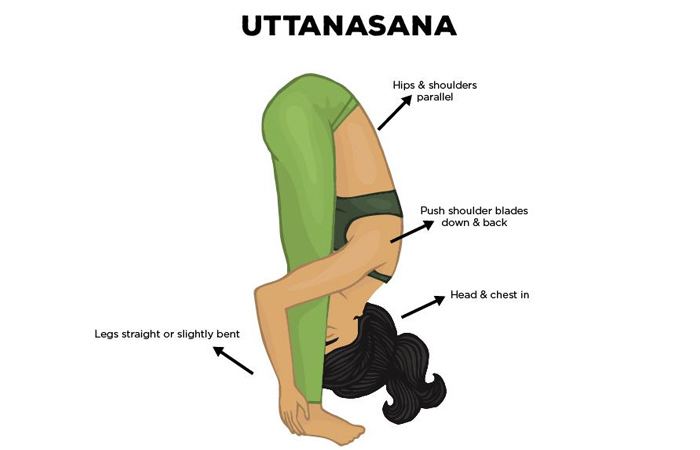 | ||
Note Consult a doctor before beginning an exercise regime Also known as Standing head to knees pose Similar Tadasana, Paschimottanasana, Adho mukha śvānāsana, Trikonasana, Baddha Koṇāsana | ||
Uttanasana (OOH-tah-NAH-sah-nah) (Sanskrit: उत्तानासन; IAST: uttānāsana), Intense Forward-Bending Pose, Intense Stretch Pose, Standing Forward Bend, Standing Forward Fold Pose, or Standing Head to Knees Pose is an asana.
Contents
- Standing forward fold uttanasana yoga pose for beginners
- Etymology
- Description
- Murghasana Advance version of Uttanasana
- Anatomical focus
- Contraindications and cautions
- Alternative asana
- Variations
- Padahastasana
- References
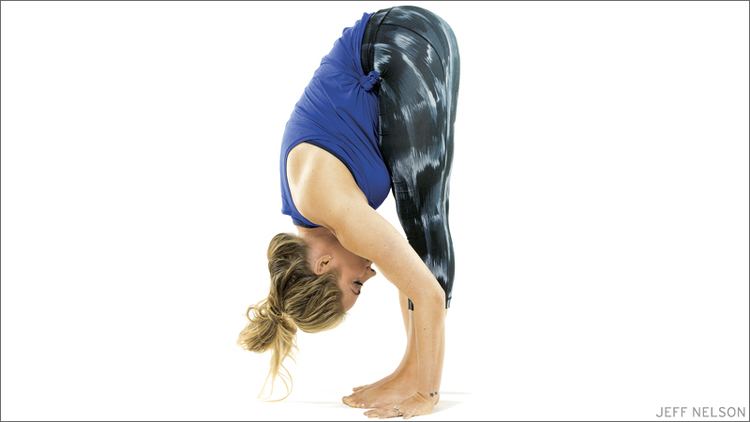
Standing forward fold uttanasana yoga pose for beginners
Etymology
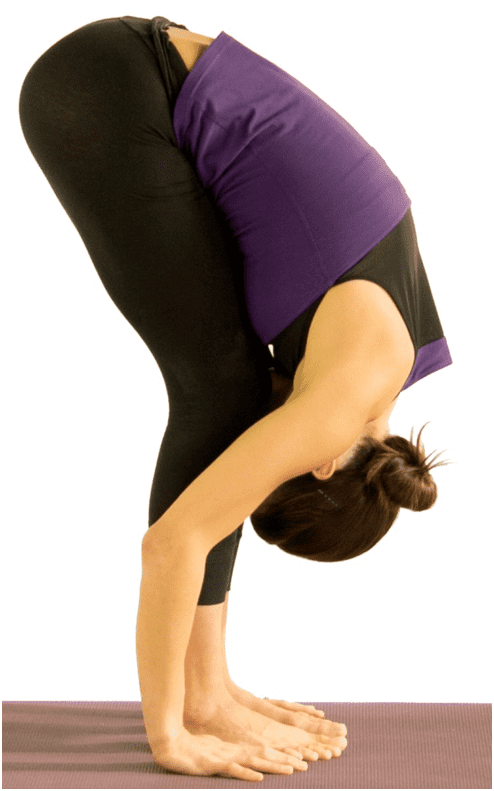
The name comes from the Sanskrit words
Ud (उद्; ud) = prefix for verbs or nouns, indicating superiority in location, rank, power, intensity
Tana (तान; tāna) = "stretched"
Uttana (उत्तान; uttāna) = "intense stretch" or "straight" or "stretched", and
Asana (आसन; āsana) meaning "posture" or "seat".
Description
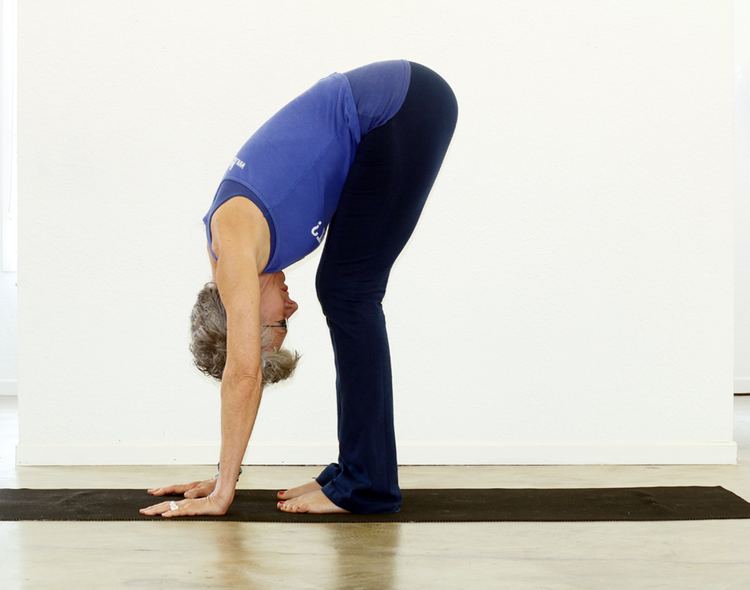
The asana consists of standing with feet together, then hinging forward from the hips, letting the head hang, with palms placed flat on the floor near the feet.
Murghasana - Advance version of Uttanasana
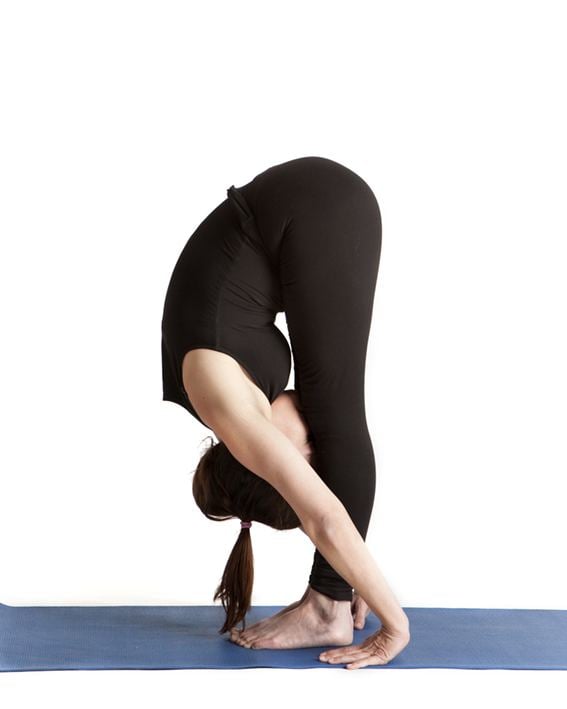
Yoga has an ancient history of ancient India. Most of the words are derived from Hindi Language. Murgha in Hindi means Cock/Hen. Murghasana is also called Hen Posture. In this variation the Yogi has to bend down, Pass arms between legs and hold her ear lobes with thumb and index fingers, in easy words, holding ears lobes while in uttanasana posture. This posture is very good for blood circulation on brain and face. It removes untimely wrinkles, sharps memory and brings glow to your face.
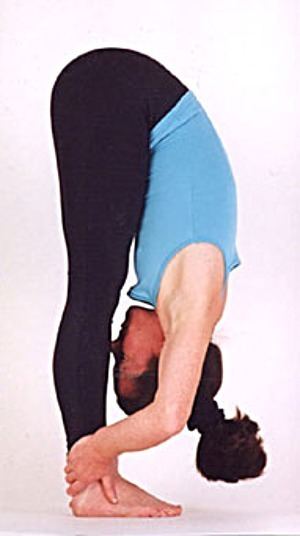
An average yogi can easily hold this posture up to 2–3 minutes but yogis with practice can increase their time up to 15 minutes as well.
Anatomical focus
The asana provides a complete stretch to the entire back of the body, particularly the hamstrings.
Contraindications and cautions
This asana has been criticized by some practitioners of kinesiology, physical therapy, and others, who recommend a seated rather than standing forward bend.
Alternative asana
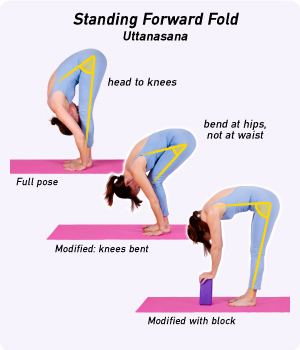
Paschimottanasana is a safer, sitting variant of this frontbend which relies more upon active flexibility of the muscles in its later stages. It is more difficult to attain similar flexibility since gravity cannot passively aid the stretch as much as in Uttanasana. Once the hands are able to bear more and more weight in Uttanasana it becomes safer and the difference in safety and customizability becomes less. Although it could be argued that Paschimottasana is not a safe forward bend for the back as the pelvis can become locked and tight hamstrings add excessive pull on lower back via pelvic sit bones.
Variations
This asana has a very large number of variations and associated techniques.
Padahastasana
Padahastasana; Sanskrit: पादहस्तासन; Sanskrit pronunciation: [pɑːd̪ɐɦɐs̪t̪ɑːs̪ɐn̪ɐ]; IAST: pādahastāsana) or Hand Under Foot Pose is an asana.
The name comes from the Sanskrit words pada (पाद; pāda) meaning "foot", hasta (हस्ता; hastā) meaning "hand", and asana (आसन; āsana) meaning "posture" or "seat".
Padahastasana is a standing, inverted asana which the hands are stretched down to grasp the feet.
The pose stretches the entire back of the body from the head to the heels.
